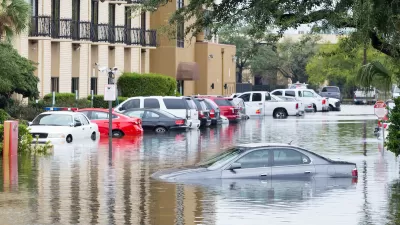Stewart M. Patrick looks at the convergence of trends in natural disasters and urbanization in the developing world and sees a dire threat to the world's urban populations growing.
Recent disastrous floods in Manila and China that have reportedly been intensified by urbanization are only a sign of things to come, writes Patrick. With 75 percent of the world predicted to live in cities by 2050, and most of the growth between now and then occurring in areas of the developing world that are "typically 'poorly planned and managed' by local authorities," many more people will be at risk of increasingly common natural disasters.
In addition, notes Patrick, "Vulnerability of urban areas to natural disasters is hardly restricted
to the developing world, of course, as the Japanese earthquake and U.S.
experience with Hurricane Katrina attest."
So what can be done to try to head off the worst effects of these converging trends? According to Patrick, "Two important steps are building local capacity to anticipate risk
levels and establishing channels through which to request resources from
state, provincial, or national governments. Another priority is
emergency response training in vulnerable cities or neighborhoods.
Finally, investing in-and publishing-threat
assessments and risk modeling is critical."
FULL STORY: Man-Made Cities and Natural Disasters: The Growing Threat

Alabama: Trump Terminates Settlements for Black Communities Harmed By Raw Sewage
Trump deemed the landmark civil rights agreement “illegal DEI and environmental justice policy.”

Planetizen Federal Action Tracker
A weekly monitor of how Trump’s orders and actions are impacting planners and planning in America.

The 120 Year Old Tiny Home Villages That Sheltered San Francisco’s Earthquake Refugees
More than a century ago, San Francisco mobilized to house thousands of residents displaced by the 1906 earthquake. Could their strategy offer a model for the present?

In Both Crashes and Crime, Public Transportation is Far Safer than Driving
Contrary to popular assumptions, public transportation has far lower crash and crime rates than automobile travel. For safer communities, improve and encourage transit travel.

Report: Zoning Reforms Should Complement Nashville’s Ambitious Transit Plan
Without reform, restrictive zoning codes will limit the impact of the city’s planned transit expansion and could exclude some of the residents who depend on transit the most.

Judge Orders Release of Frozen IRA, IIJA Funding
The decision is a victory for environmental groups who charged that freezing funds for critical infrastructure and disaster response programs caused “real and irreparable harm” to communities.
Urban Design for Planners 1: Software Tools
This six-course series explores essential urban design concepts using open source software and equips planners with the tools they need to participate fully in the urban design process.
Planning for Universal Design
Learn the tools for implementing Universal Design in planning regulations.
Clanton & Associates, Inc.
Jessamine County Fiscal Court
Institute for Housing and Urban Development Studies (IHS)
City of Grandview
Harvard GSD Executive Education
Toledo-Lucas County Plan Commissions
Salt Lake City
NYU Wagner Graduate School of Public Service





























